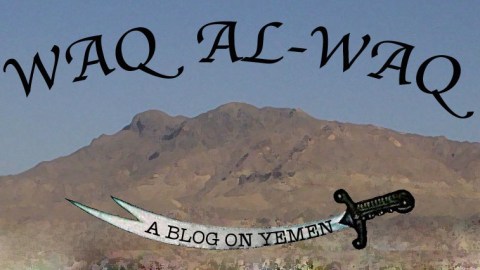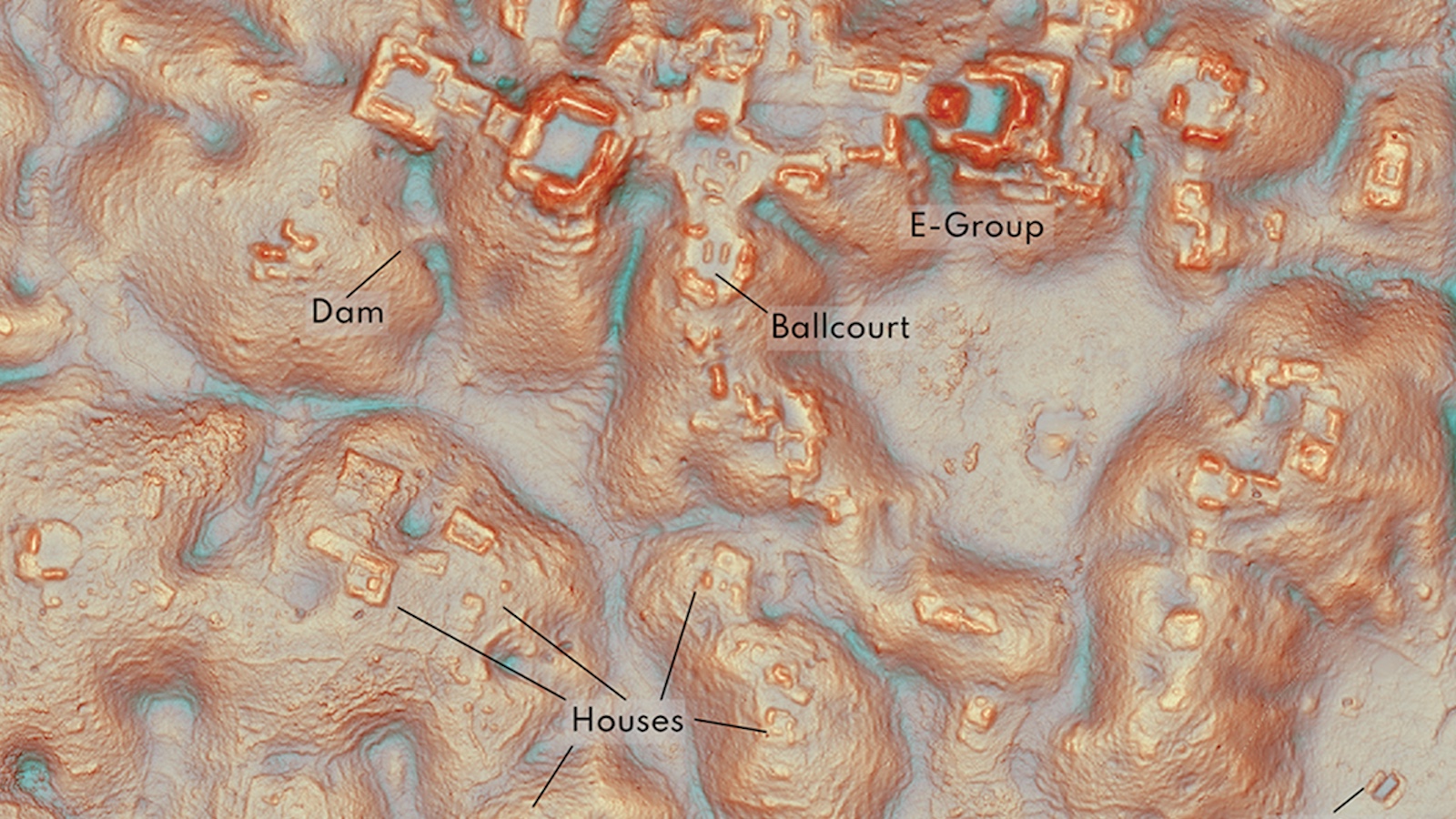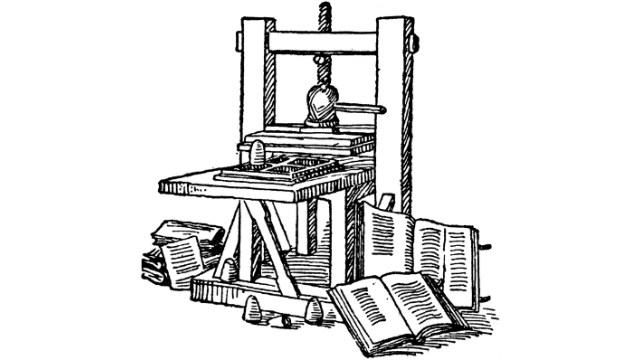Frontline: al-Qaeda in Yemen

Last night Frontline aired the film al-Qaeda in Yemen, which was reported by Ghaith Abdul-Ahad who writes for the Guardian and who, along with Declan Walsh when he was at the Guardian, used to be two of my favorite reporters to read on places I’d never been.
The film was spectacular and I would encourage anyone who reads Waq al-waq to watch it here (sadly, I’m told streaming is only available for those in the US, but those outside can read the transcript.)
The link above also has several supplementary pieces written by Azmat Khan, who has done a fabulous job not only with the pieces but also with this interactive map of strikes in Yemen.
Ghaith Abdul-Ahad as it should be clear to anyone watching the film is an incredibly brave journalist, who joins the handful of others who have reported from AQAP-controlled territory and/or interviewed top al-Qaeda figures.
He wasn’t, however, the only one filming. Ansar al-Shariah released this film in which Ghaith appears and they also dedicated issue #16 of their newsletter to documenting his visit.
Frontline also asked several people to live-tweet the film, which I happily did until I reached my tweet-limit and twitter cut me off.
They also asked several of us to answer questions on al-Qaeda in Yemen and then published the edited results in a very engaging roundtable. The diversity of opinion and approaches here is, at times, quite sharp.
I encourage you all to watch the film linked above and then read the roundtable posted here – it includes two former ambassadors to Yemen, journalists, Yemeni activists and lowly graduate students.
Finally, while most of my answers made it onto the roundtable, some did not, and so, for those interested in even more depth on AQAP, I have taken the liberty of posting the original version of the question-and-answer portion that I completed below (the bold indicates Frontline’s questions, italics are my responses):
Frontline: Question and Answer
Describe the threat in Yemen before 9/11. What impact did the USS Cole bombing have on how the U.S. perceived Al Qaeda’s threat?
Prior to 9/11 al-Qaeda used Yemen primarily as giant warehouse, a place for members to rest and recuperate. In early 1990, North and South Yemen united to form a single country. This mismatched marriage of a largely tribal north and a Socialist south took place just as the Cold War was coming to an end and as several Yemenis who had fought in the jihad in Afghanistan began to return home.
At this point, in the early 1990s, the goals of Osama bin Laden and President Ali Abdullah Salih were remarkably similar. Both men wanted to defeat the Socialists, who still held sway in the south. Salih wanted to solidify his control over the country, while bin Laden wanted to “liberate” Yemen from Socialist control much like he believed the mujahidin had liberated Afghanistan from communists.
In 1990 and 1991, bin Laden financed several training camps across Yemen, while Salih invited southern tribesmen who had been forced into exile when the Socialists took power in the 1960s to return to the newly united country he now led. The result of these two parallel strategies was a brutal war of attrition that raged across southern Yemen, lasting four years until 1994.
That same year, realizing they had been outmaneuvered by Salih, the Socialists attempted to secede, which sparked a brief civil war. Salih used several jihadis – both from bin Laden’s al-Qaeda network as well as from Ayman al-Zawahiri’s al-Jihad organization – to complement the Yemeni military as it put down the secession attempt. Throughout the mid 1990s both al-Qaeda and al-Jihad continued to operate safe houses in Yemen, even surviving an attempted betrayal in 1998. (The Yemeni intelligence officer, who tipped off the jihadis to a traitor in their ranks, is now in Guantanamo Bay)
The Cole attack, in October 2000, came just before the US presidential election that pitted Bush against Gore and barely two years after al-Qaeda’s near simultaneous bombings of the US embassies in Kenya and Tanzania. That time the US had responded with Cruise missile strikes on targets in Sudan and Afghanistan.
But the strikes failed to kill bin Laden and by the time of the Cole attack the US was struggling to figure out how to respond to al-Qaeda. Multi-million dollar missile strikes that destroyed crude training camps, which could quickly be rebuilt didn’t seem like a sufficient response and slowly it the thinking in Washington hardened into a consensus that bin Laden and al-Qaeda were a job for the CIA not the military.
In the end, neither the Clinton administration – which released its report on the attack on its final day in office – or the Bush administration, which came into office three months after the attack, ever responded to the bombing. In fact, on 9/11 the FBI team was still in Sanaa investigating the Cole bombing.
When did Al Qaeda’s stronghold in Yemen really start to emerge and solidify? Why?
When discussing al-Qaeda in Yemen, it is best to think about it in three distinct phases.
First, there is the period of the 1990s, the warehousing period, which we discussed above. Second, there is what I would call the first phase of the war against al-Qaeda in Yemen, which lasted roughly from September 11, 2001 to November 2003. Finally, there is the second phase of the war, which I date from February 2006 to the present.
Phase I (September 11, 2001 – November 2003): Al-Qaeda in Yemen was as surprised as the rest of the world by the September 11 attacks. When bin Laden’s predicted uprisings did not take place in the aftermath of the attacks, the organization in Yemen was forced to regroup and reorganize on the run.
In November 2002, a US drone strike killed Abu Ali al-Harithi, the head of al-Qaeda in Yemen and a man US intelligence officials referred to as the “godfather” of the organization. That strike broke the back of al-Qaeda in Yemen and within a year Yemen had managed to arrest his two top lieutenants and al-Qaeda had basically been defeated in Yemen.
Interlude (November 2003 – February 2006): As the remnants of al-Qaeda in Yemen were being rounded up in late 2003, the war in Iraq began to attract foreign volunteers. For young men in Yemen, who were pre-disposed to fighting, the war in Iraq acted like a giant magnet. Many of these men traveled to Iraq to fight rather than remaining in Yemen to fight in a dying jihad at home.
Phase II (February 2006 – Present): In February 2006, 23 al-Qaeda suspects escaped from a maximum-security prison in Sanaa. Among the escapees were Nasir al-Wihayshi, who had been bin Laden’s personal secretary for four years in Afghanistan prior to September 11, and Qasim al-Raymi.
Together these two men rebuilt al-Qaeda in Yemen up from the ashes of its earlier defeat. Wihayshi, who has been described as bin Laden’s “shadow” in the late 1990s, essentially used bin Laden’s blueprint from Afghanistan to resurrect al-Qaeda in Yemen. He also went to school on the failures of al-Qaeda in Iraq and Saudi Arabia, and worked to limit Muslim civilian casualties in Yemen, which he believed was a key reason al-Qaeda had been defeated in those countries.
In 2009, Wihayshi publicly welcomed several former Guantanamo Bay detainees into the organization and adopted the name al-Qaeda in the Arabian Peninsula (AQAP), signifying greater regional and international ambitions as the group continued to attract new members. Later that year, al-Qaeda attempted to assassinate Muhammad bin Nayif, the Saudi prince in charge of counterterrorism and, of course, on Christmas Day it put a bomber on a plane to Detroit. Both operations failed, but the bombs hadn’t been detected
In 2011, AQAP began taking and holding territory, essentially viewing itself as a de facto government in parts of Abyan and Shabwa. At the same time, the organization appears to have more tripled in size, at least according to estimates by the US and Yemeni governments. In late 2009, Yemen estimated that there were between 200-300 fighters in AQAP. Today, John Brennan, President Obama’s chief counterterrorism adviser, estimates the organization has over 1,000 members.
How and when did Al Qaeda in the Arabian Peninsula emerge? What’s the organization’s relationship to Al Qaeda and what’s its mission? Who are its targets? (When did it begin targeting the U.S.? How is the organization structured and how many members does it have?)
The roots of al-Qaeda in the Arabian Peninsula can be traced back to the jailbreak in February 2006. That was really the group’s genesis moment. From the beginning, al-Qaeda has made it clear that it sought to strike at both the West and Yemen’s local government – what are often referred to as the “near” and “far” enemies.
As al-Qaeda grew and developed more of an infrastructure in Yemen in 2007 and 2008 it started to expand its targeting, moving from local targets to regional ones and finally to international ones. As you track the attacks and compare it to the group’s public statements a pattern emerges in which al-Qaeda sets itself a goal and then attempts to match its actions to its rhetoric.
What we know of the organization is far from complete, and indeed one has to be very careful about not reading too much into too little evidence. There is a great temptation to take the fractured pieces of evidence that bubble to the surface and construct a coherent narrative from all these disparate pieces.
That being said, what we do know suggests that Wihayshi has constructed AQAP in a way that is designed to survive the loss of key cell leaders. He learned from the first phase of the war in Yemen in which the drone strike that killed Abu Ali al-Harithi basically destroyed al-Qaeda in Yemen.
To avoid that, Wihayshi has appointed what he refers to as amirs, or commanders, to different regions of Yemen. These men are often tied by tribal or family connections to the area where they oversee. And like bin Laden, Wihayshi gives his commanders a certain degree of operational flexibility, mimicking the philosophy of “centralization of decision making and decentralization of execution” that bin Laden preferred.
What is AQAP’s relationship with affiliated groups that have also emerged in Yemen like Ansar al Sharia? (Please explain what Ansar al Sharia is.)
This is a great question and one that has divided several people who look at what is happening in Yemen. The best short synopsis I’ve seen on the relationship between AQAP and Ansar al-Shariah is from Iona Craig, a British journalist working in Yemen, who described Ansar al-Shariah as “the insurgent arm of the terror group al-Qaeda in the Arabian Peninsula.” That, I think, is absolutely correct.
The first time we heard the name Ansar al-Shariah was in early 2011, when Adil al-Abab, AQAP’s chief cleric, announced that Ansar al-Shariah was the name al-Qaeda used to introduce itself to people in Yemen.
Just as bin Laden realized that the name “al-Qaeda” had become in Arabic almost a byword for terror, so too did AQAP come to the conclusion that the name al-Qaeda had too much negative baggage associated with it. Adopting the name Ansar al-Shariah has basically been a rebranding attempt.
We know that Nasir al-Wihayshi heads both AQAP and Ansar al-Shariah. We know that the different amirs for Ansar al-Shariah accept the bay‘a or oath of allegiance on behalf of Wihayshi. And we know that members claimed by Ansar al-Shariah are also claimed by AQAP.
The more one reads the material put out by AQAP and Ansar al-Shariah – from newsletters, “martyr” biographies, statements of responsibility and so forth – the clearer it becomes that the two are different faces of the same organization. This is not unprecedented in Yemen. In fact, in 2008 there was a similar debate over two names in Yemen, who in the end both turned out to be al-Qaeda. What we don’t know is whether everyone who self-identifies as Ansar al-Shariah would also identify as a member of AQAP.
When and how did the drone program begin in Yemen? Which different agencies or groups carry out the drone operations in Yemen today?
The first strike that we know of (under President Obama) took place on December 17, 2009. This was a Cruise missile strike on what the US believed to be an al-Qaeda training camp in the southern governorate of Abyan.
Unfortunately, this camp in question was actually a Bedouin encampment at which only a few al-Qaede members were present. Jeremy Scahill of the Nation has done some crucial reporting on this tragoc incident, in which 55 people were killed – most of whom were civilians. Following a handful of strikes in late 2009 and early 2010, the US carried out a strike in the central governorate of Marib in which it killed the deputy governor of the area instead of the al-Qaeda operative it had targeted.
After that there appeared to be a cessation of US strikes. Although given how both the US and Yemen have handled the publicity around these strikes it is incredibly difficult to ascertain which country actually carried out any given strike. For instance, Yemen often claims credit for strikes that the US carries out. And we know from Wikileaks documents that Yemen’s government has lied to its own parliament about US strikes inside the country. This deliberate obfuscation by both sides makes determining responsibility incredibly difficult.
As Yemen’s military fragmented during the uprising of 2011, the US once again started carrying out strikes against suspected al-Qaeda targets in Yemen. In September 2011, the US killed Anwar al-Awlaki and a few weeks later it killed his 16-year-old son in a mistaken strike.
Until very recently the US refused to comment on drones strikes – with the exception of targeted, political leaks – however, recently that has started to change. There is still, however, a great deal that we don’t know. Currently it appears that both the CIA and JSOC are running parallel drone programs in Yemen, while other branches of the US military have flown air raids and used Naval ships for yet more strikes.
Recently the US has also sent back what the Pentagon calls trainers to Yemen. These individuals provide logistical support and advice to the Yemeni military in its war against al-Qaeda in Abyan and Shabwa. Ken Dilanian of the LA Times has also reported that “teams of CIA officers and U.S. contractors have operated in Yemen for some time, hunting Al Qaeda militants and developing intelligence for drone strikes.” So, the US military effort in Yemen is much, much more than just drones.
Indeed, it appears as though Yemen – rather than Iraq or Afghanistan – is the model for how the US wants to fight its wars of the future: a light on-the-ground footprint of largely Special Forces and a heavy over-the-horizon presence of drones, planes and warships.
Where are these strikes taking place in Yemen? Are they concentrated in a particular region or area, or are they more spread out?
Most of these strikes are taking place in Abyan and Shabwa, the two provinces where AQAP is strongest. But the strike that killed Anwar al-Awlaki took place in al-Jawf near the Saudi border and there have been other strikes that have taken place in the central governorate of Marib. In Yemen, the US does not appear to be constrained by geography. Wherever it finds what it believes to be an al-Qaeda target that is where it strikes.
What led to the recent dramatic escalation in drone strikes in the past few months?
The airstrikes have increased dramatically since Abdu Rabu Mansur Hadi was sworn-in as president in late February. Hadi has a very shallow base of support within Yemen and as a result he is incredibly dependent on strong US and international backing to offset what he lacks domestically. Hadi and the US appear to be moving down the road toward a mutually dependent relationship.
The US needs Hadi to be able to do what it wants in Yemen, which is primarily targeting al-Qaeda, while Hadi needs strong and unambiguous support from the US, which he has received, in order to offset the lack of strong base of support domestically.
In your perspective, how effective are the strikes? (What do you believe are the risks of the drone program?)
The drone and airstrikes are an incredibly powerful weapon that give the US an amazing advantage over AQAP when they work as they are intended to work. However, when they go wrong – such as they did with the December 17, 2009 strike – they become a powerful weapon in the hands of AQAP that helps the group bolster its ranks with new recruits. AQAP can basically hold up the image of shattered corpses of women and children who have died in strikes with the caption “Made in the USA.” This is a powerful recruiting tool.
Over the past two-and-a-half years the US has managed to kill several mid-level commanders within AQAP, but at the same time it has also killed several civilians. In December 2009, AQAP had roughly 200-300 members and controlled no territory. Today it has over 1,000 members and controls significant amounts of territory in Abyan and Shabwa. This begs a very simple question: Why has AQAP grown so strong in such a short time? Now, I don’t think US drone and airstrikes are the only reason for the rapid growth of AQAP – one also has to consider the collapse of the Yemeni state in 2011 – but in my view it is certainly one of the key factors.
What are the alternatives to the drone program?
The Obama administration has actually articulated a very comprehensive and, in my view, wise policy for Yemen in which the US talks about nestling its counterterrorism strategy within its broader Yemen strategy. Unfortunately, the Obama administration has yet to implement this strategy. Instead of seeing al-Qaeda within the context of Yemen, it sees Yemen through the prism of al-Qaeda and this, I believe, leads to mistakes of policy. And there are consequences to mistakes that are made. And, as a result, fighting AQAP in 2012 is in fact much more difficult than fighting AQAP in 2009, and part of the reason for this is US mistakes.
As long as AQAP is in Yemen and is actively plotting to attack the US drone and airstrikes will be part of the US response, but I would caution policy makers against a response that is almost wholly drone and airstrikes, which is what the US has at the moment. The war against AQAP can never be won if it is framed as the US against AQAP in Yemen.
This is much more than a framing issue, but that is where it has to start. The US has to realize when it can be a force for positive change in Yemen and when it needs to take a step back and allow local clerics and preachers the space to confront AQAP.
What other countries are assisting the U.S. or Yemen in the fight against Al Qaeda’s stronghold there? What is Saudi Arabia role, and what’s at stake for its security?
In addition to the US both the UK and Saudi Arabia are playing an active role in attempting to combat AQAP. Muhammad bin Nayif, the deputy Minister of the Interior in Saudi Arabia, is probably AQAP’s single greatest enemy.
He did much to eliminate al-Qaeda in Saudi Arabia after a series of bombings in 2003 and he has carried out several damaging intelligence operations against AQAP. There have also been unconfirmed allegations that Saudi jets have flown bombing raids against AQAP positions in Abyan.





